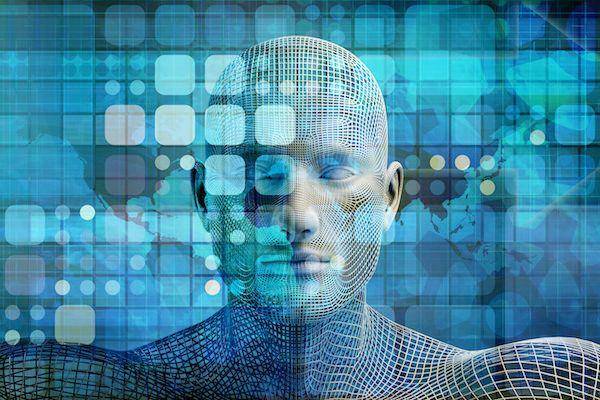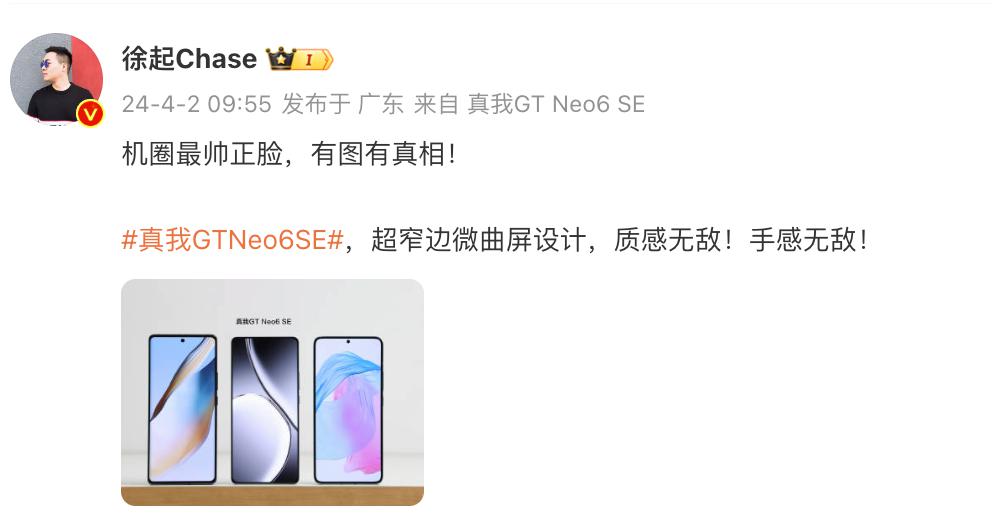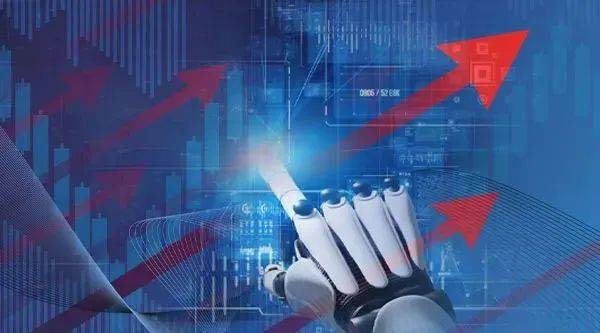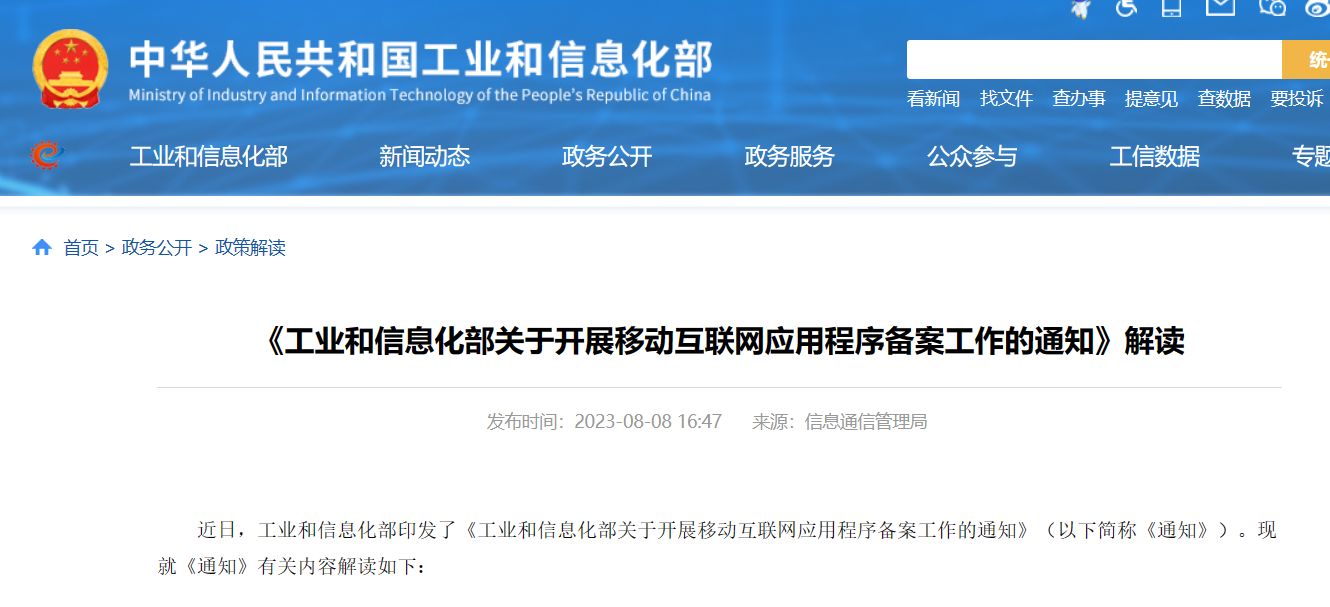 Technology peripherals
Technology peripherals It Industry
It Industry Ministry of Industry and Information Technology: By 2025, the new infrastructure standard system for the Internet of Things will be basically established
Ministry of Industry and Information Technology: By 2025, the new infrastructure standard system for the Internet of Things will be basically establishedAccording to news from this website on August 18, this website learned from the Ministry of Industry and Information Technology that in order to give full play to the leading role of standards in the new infrastructure of the Internet of Things and continue to improve the new infrastructure technology and standard system of the Internet of Things, the Ministry of Industry and Information Technology organized relevant units to complete the preparation The "Guidelines for the Construction of New Infrastructure Standard Systems for the Internet of Things (2023 Edition)" (Draft for Comments).
The draft for comments shows that by 2025, the new infrastructure standard system for the Internet of Things will be basically established. More than 30 new national standards and industry standards have been newly formulated, further highlighting the role of promoting the construction of new infrastructure for the Internet of Things; supporting social groups to independently formulate and publish group standards, and implementing advanced group standard application demonstrations; participating in the formulation of more than 10 international standards, providing Promote the global development of the Internet of Things industry and provide strong support.

The draft for comments stipulates that organize and promote enterprises, universities, research institutions, etc. in the entire IoT industry chain to strengthen standardization work collaboration; Strengthen the construction of public service platforms such as Internet of Things standard verification, testing, and achievement transformation, and encourage local governments to introduce policies and measures to build public service capabilities for Internet of Things standards; Establish an evaluation system for the implementation effects of Internet of Things standards , timely revise and improve relevant standards based on the evaluation results to ensure the practicality and timeliness of the standards; accelerate the transformation of international standards for the Internet of Things, and improve the consistency of key indicators of domestic and international standards.
The key points of the draft for comments are as follows:
Basic principles
##Innovation-driven, application-driven. Accelerate research on key common technologies of the Internet of Things, promote the integration of advanced and applicable scientific and technological innovation results into standards, and continue to improve standard technology levels. Facing industry application needs, collaboratively promote the development of application standards for the integration of the Internet of Things and key industries, and accelerate the construction of a large-scale and intensive Internet of Things industrial ecosystem.
System layout, urgent needs first. Coordinate and promote the development of various types of standards for the Internet of Things, strengthen the full life cycle management of standards, and continue to improve the standards work system. Focus on IoT technology innovation, application scenario development, industrial development and security needs, and accelerate the development of basic standards, key technologies, evaluation methods, typical applications and other standards.
Coordinated advancement, open cooperation. Give full play to the advantages of industry, academia, research, and all links in the industrial chain, strengthen cross-industry and cross-field work collaboration, and promote the effective connection of upstream and downstream standards in the industrial chain. Encourage Chinese enterprises and institutions to deeply participate in international standardization activities, actively contribute Chinese solutions, and jointly formulate international standards.
Construction Goals
By 2025, the new infrastructure standard system for the Internet of Things will be basically established. More than 30 new national standards and industry standards have been newly formulated, further highlighting the role of promoting the construction of new infrastructure for the Internet of Things; supporting social groups to independently formulate and publish group standards, and implementing advanced group standard application demonstrations; participating in the formulation of more than 10 international standards, providing Promote the global development of the Internet of Things industry and provide strong support.Construction ideas
(1) Standard architecture of new infrastructure for the Internet of Things
According to the construction of new infrastructure for the Internet of Things Involved elements, activities, etc., the new infrastructure standard system of the Internet of Things includes four parts: basic standards, technical standards, construction and operation and maintenance standards, and application standards, as shown in Figure 1. Basic standards are the overall and framework standards for the new infrastructure of the Internet of Things, providing basic support for other types of standards; technical standards are the key common technologies and integration technology standards for the new infrastructure of the Internet of Things, providing technical support for the realization of Internet of Things applications. ; Construction and operation and maintenance standards are standards for the planning, construction, operation, and maintenance of IoT systems, providing important guarantees for new IoT infrastructure; application standards are oriented to the specific application needs of the industry, and the refinement of other standards supports the development of various industries. .(2) New infrastructure standard system framework for the Internet of Things
New infrastructure standards for the Internet of Things The system framework consists of basic standards, technical standards, construction, operation and maintenance standards, application standards, etc., as shown in Figure 2.Construction content
(1) Basic standards
Includes standards such as terminology and classification, architecture, identification, evaluation, security and trustworthiness, and management.1. Terminology and classification
is used to unify related concepts, classifications and descriptions of Internet of Things technology, products, services, applications, etc.2. Architecture
is used to standardize the composition of the Internet of Things and the logical relationships between its components, including standards such as the Internet of Things reference model and system architecture.
3. Identification
is used to standardize the identification encoding, registration, and parsing of various objects in the Internet of Things field, including identification encoding, encoding format, object metadata, and parsing system and other standards.
4. Evaluation
is used to standardize the testing requirements and evaluation index system of IoT devices and systems, including consistency, interconnection, and interoperability of IoT devices and systems. Test requirements such as operation and environmental adaptability, as well as evaluation index systems and methods such as IoT system functions, performance, and capability maturity.
5. Security and Trustworthiness
is used to standardize the security and trustworthiness requirements and guarantees of key components such as IoT terminals, networks, platforms (systems), and gateways. Measures include IoT security architecture, security classification, terminal security, transmission security, data security, platform (system) security, security management and other standards; IoT trusted architecture, trust classification, identity trust, data trust, system Credibility and other standards.
6. Management
is used to standardize the management requirements of relevant responsible entities for new infrastructure of the Internet of Things, including standards for Internet of Things sensing facility management, network facility management, etc. As well as standards related to standardizing the competency requirements for Internet of Things practitioners.
(2) Technical standards
Including standards for perception technology, network and communication technology, data processing technology, and fusion technology.
1. Perception technology
is used to standardize IoT information perception, collection, acquisition and other related technologies, including sensors, barcode recognition, QR code recognition, audio and video Collection, high-precision positioning, wireless sensing, passive sensing, fused sensing and other standards.
2. Network and communication technology
is used to standardize IoT network architecture, equipment, protocols, access, networking and integration and other related technologies, including: IoT Network equipment standards such as network access equipment, switching equipment, gateways, short-distance wireless communications, mobile communications, wired communications, maritime communications, underwater communications and other communication technology standards; wireless sensor networks, wireless personal area networks, wireless local area networks, Low-power wide area network, satellite Internet of Things, deterministic network, time-sensitive network, software-defined network, network function virtualization, IPv6 and other network technology standards; network interface standards for the Internet of Things to connect to public networks or private networks; heterogeneous Internet of Things Network convergence standards such as interconnection, configuration, collaboration, scheduling, and interoperability.
3. Data processing technology
is used to standardize information model, data analysis, data storage and management, data fusion, data interface and other technologies, including data dictionary, metadata Data, object model, etc.
Information model standards, data analysis standards such as collaborative information processing and rule engines, data storage and management standards such as storage structure, data life cycle management, and data governance, data fusion standards such as data aggregation and sensory information fusion, data Exchange and share, human-computer interaction, data interoperability, data visualization and other data interface standards.
4. Fusion technology
is used to standardize related technologies associated with the design and application of Internet of Things systems, including massive multi-source heterogeneous data analysis and distributed computing , distributed storage and other big data integration technology standards, resource virtualization, distributed resource management and other cloud computing integration technology standards, digital identity, data on-chain, consensus mechanism, light node or multi-node networking and other blockchain integration technology standards , object operating mechanism model, edge intelligence, model compression, joint learning, knowledge graph and other artificial intelligence integration technology standards.
5. Radio frequency and electromagnetic compatibility technology
is used to regulate the frequency usage, radio frequency performance, and electromagnetic compatibility performance of IoT devices and systems, including IoT devices and systems Radio frequency technical requirements and test methods, electromagnetic compatibility requirements and test methods, etc.
6. Edge computing technology
is used to standardize IoT edge data collection and processing, edge devices, edge platforms, cloud-edge-device collaboration and other technologies, including edge computing General requirements, edge data interface, edge data management, resource configuration and collaboration, edge nodes, edge gateways, edge controllers, edge intelligence and other standards.
7. Internet of Things operating system
is used to standardize the general basic functions and technical requirements of the Internet of Things operating system, including operating system architecture, kernel and driver interface, system Standards such as services, resource sharing and virtualization, distributed collaboration, application development framework, and security.
8. Digital twin technology
is used to guide interactive mapping, simulation, analysis, and assisted decision-making between target entities and digital entities based on the Internet of Things, including digital twins Reference architecture, functional and performance requirements for different system levels, data interaction and interfaces, performance evaluation and compliance testing and other standards.
(3) Construction, operation and maintenance standards
Construction and operation and maintenance standards guide various industries to promote the construction and large-scale deployment and application of new infrastructure for the Internet of Things, and provide solutions for the Internet of Things in various fields Overall requirements are put forward for the overall planning, integrated implementation, collaborative operation and maintenance, and unified management of new infrastructure.
1. Planning and design
is used to standardize the overall requirements, key processes and related technologies in the planning and design stage of new infrastructure for the Internet of Things, mainly including planning and design related standards for different objects such as Internet of Things systems, network infrastructure, platforms, terminals, etc.
2. Deployment and implementation
is used to standardize the overall construction and deployment implementation requirements of new IoT infrastructure, mainly including product selection requirements, facility and equipment deployment requirements, and acceptance and delivery specifications, implementation guarantees and other related standards.
3. Operation and maintenance
is used to standardize the daily operation status monitoring and maintenance requirements of various Internet of Things systems, platforms, facilities and equipment, mainly including various types of Internet of Things General requirements for operation and maintenance of objects, operation monitoring indicators, fault diagnosis methods and other related standards
(4) Application standards
Application standards are based on industry needs and combined with industry application characteristics , from the perspective of supporting the digital transformation of the industry, provide IoT application guidelines in industry application fields.
1. Intelligent manufacturing
is oriented towards the development, production and application of real-time, automated, embedded and high-security industrial Internet of Things equipment and platforms, stipulating industrial Technical requirements for information perception, autonomous control, production environment monitoring, equipment health management, and real-time monitoring of materials in manufacturing.
2. Smart Home
Facing the deployment, performance evaluation, access certification, cross-vendor interconnection and other needs of smart home systems, stipulates equipment in the smart home field, Functional and technical requirements related to platforms, applications, and systems, as well as architecture, interfaces, protocols, and other requirements involved in related networks, cross-platform interoperability, and end-edge-cloud collaboration.
3. Smart City
Facing the digital upgrading and transformation of urban infrastructure and the design and development of related Internet of Things systems, it stipulates the monitoring and evaluation of equipment status in cities, parks, and buildings, and more Technical requirements include collection and aggregation of heterogeneous data from sources, cross-protocol access, system function reuse and control, cross-department data sharing and application collaboration.
4. Digital Countryside
Facing rural smart grid, smart logistics, smart water conservancy, public governance, comprehensive services and other construction fields, stipulates user-side energy management, rural transportation Technical requirements for sensing terminals and Internet of Things systems in service station public information management, dynamic water body monitoring, rural public health information collection, and joint epidemic prevention and control.
5. Smart transportation
is oriented to applications such as intelligent transportation management, intelligent dispatching, and communication control, and stipulates transportation infrastructure and means of transportation such as roads, rails, ports, and shipping. Information sensing, communication, data processing and other technical requirements.
6. Internet of Vehicles
Facing information interaction and safe, orderly, and efficient collaboration between vehicles, roads, people, and clouds, stipulates roadside related to Internet of Vehicles Requirements for communication systems, information collection equipment for traffic environment and traffic infrastructure, intelligent vehicle-mounted and portable terminals, management and service platforms, etc.
7. Smart Energy
is oriented to the Internet of Things applications in the entire process of source, grid, load and storage in typical energy fields such as electricity, gas, water, heat, etc., and stipulates energy production control , regional energy management, smart metering systems, comprehensive energy services and other typical applications of systems, equipment, protocol interfaces, offshore or underwater networking, data interconnection and other technical requirements.
8. Public safety
Scenarios such as information perception, status monitoring, dynamic prevention and control, fault warning, comprehensive processing and response, and natural disaster emergency response for public safety are stipulated Technical requirements for sensing terminals such as sensors and controllers in the public safety field, various public safety application management platforms, digital epidemic prevention systems, public health emergency management systems, communication protocol interfaces, etc.
9. Smart agriculture
is oriented to application scenarios such as agricultural production, pest control, livestock and aquaculture, agricultural product quality traceability, fishery law enforcement, etc., stipulating environmental monitoring systems, Remote monitoring system, various physiological characteristics monitoring terminals and other technical parameters, protocol interfaces, collection data directory, etc. 10. Intelligent construction The overall requirements, as well as the technical requirements of the Internet of Things such as smart sensors, radio frequency identification (RFID), QR codes, near field communications, and low-power wide area networks.
11. Smart Environmental ProtectionFacing scenarios such as environmental testing, pollution source management, environmental supervision and law enforcement, the Internet of Things is stipulated in environmental data collection terminals and pollutant emission prediction data models , environmental protection monitoring platform and other aspects of functional and technical requirements.
12. Smart cultural tourismFor new cultural tourism services such as immersive experience, virtual exhibition halls, and high-definition live broadcasts, smart hotel operation management systems and smart navigation systems are stipulated , comprehensive tourism service platform, cultural relics environment monitoring and control system functions and technical requirements.
13. Smart Medical
For scenarios such as telemedicine, medical imaging, medical monitoring, health management, auxiliary diagnosis, medical equipment and drug management, the Internet of Things is stipulated in medical health data collection, network communication transmission, remote medical communication network, vital signs sensing terminals, Medical equipment, platforms, systems and other related technology, function, performance, security, evaluation, operation, service and other requirements.
14. Smart Logistics
For logistics, in various logistics links such as hub facilities, backbone lines, regional distribution centers and terminal distribution nodes, regulations on labeling, sorting, Warehousing, scheduling, tracking, contactless delivery and other related functions and technical requirements.
15. Smart Education
Facing application scenarios such as smart campus construction, digitization of teaching resources, and online classrooms, it stipulates intelligent teaching assistants, educational robots, intelligent learning companions, language Text informatization and other technology, product and service requirements.
Organization and implementation
Strengthen overall planning and coordination. Under the guidance of the Ministry of Industry and Information Technology and the National Standardization Administration Committee, enterprises, universities, research institutions, etc. in the entire IoT industry chain will be promoted to strengthen the coordination of standardization work. Give full play to the role of platforms such as standardization technology organizations and industrial technology alliances, strengthen cross-industry and cross-field multi-standard committee technical collaboration, and jointly build an advanced and applicable Internet of Things standard system.
Improve the work system. Establish a linkage mechanism between Internet of Things technology projects and standardization work. Strengthen the research on core technical indicators of standards in the research and development of technology projects, promptly integrate advanced and applicable scientific and technological innovation results into standards, and improve the level of standards; strengthen the verification, testing, and achievement transformation of Internet of Things standards, etc. The construction of public service platforms encourages local governments to introduce policies and measures to build public service capabilities based on Internet of Things standards.
Strengthen application implementation. Give full play to the role of local authorities, standardization organizations, industry associations, etc., carry out standard publicity and implementation activities, promote standard publicity and implementation; organize and carry out pilot work on the application of Internet of Things standards, and form the best through the selection of outstanding cases practice to promote the application and promotion of standards; establish an evaluation system for the implementation effects of Internet of Things standards, and timely revise and improve relevant standards based on the evaluation results to ensure the practicality and timeliness of the standards.
Deepen international cooperation. Accelerate the transformation of international standards for the Internet of Things and improve the consistency of key indicators of domestic and international standards. Actively participate in international standardization activities such as the International Organization for Standardization (ISO), the International Electrotechnical Commission (IEC), and the International Telecommunications Union (ITU), and work with upstream and downstream enterprises in the domestic and foreign industrial chain to jointly develop international standards for the Internet of Things.
Advertising statement: The external jump links (including but not limited to hyperlinks, QR codes, passwords, etc.) contained in the article are used to transmit more information and save selection time. The results are only For reference, all articles on this site contain this statement.
The above is the detailed content of Ministry of Industry and Information Technology: By 2025, the new infrastructure standard system for the Internet of Things will be basically established. For more information, please follow other related articles on the PHP Chinese website!
 曝领克 Z10 售 18.98 万起 800V 版本 22.98 万直指小米 SU7Jul 16, 2024 am 03:05 AM
曝领克 Z10 售 18.98 万起 800V 版本 22.98 万直指小米 SU7Jul 16, 2024 am 03:05 AM近日,有汽车博主放出了疑似销售曝光的领克Z10价格。根据这名来自广西南宁某领克中心的员工的爆料,领克Z10400V版本的起售价为18.98万元,而800V版本的起售价为22.98万元。该员工还表示"18万元起步,真香警告",疑似暗示首销期间可能还会有更多权益。fenye领克Z10据汽车博主间接爆料,领克Z10预计将于:预售时间:7月正式交付:8月售价:起步价:18.28万元中配车型:19.28万元高配版本:20.78万元首发优惠减免:8000元左右fenye领克Z10价格爆料
 工信部等部门发布《新产业标准化领航工程实施方案》,旨在于2025年前制定2000项以上新产业标准Aug 23, 2023 am 10:17 AM
工信部等部门发布《新产业标准化领航工程实施方案》,旨在于2025年前制定2000项以上新产业标准Aug 23, 2023 am 10:17 AM工信微报官方公众号报道,工业和信息化部等四个部门今天发布了关于印发《新产业标准化领航工程实施方案(2023─2035年)》的通知通知指出,到2025年,相关部门支撑新兴产业发展的标准体系将逐步完善、并将引领未来产业创新发展的标准加快形成。本站发现,官方表示,“共性关键技术和应用类科技计划项目”形成标准成果的比例将在后年达到60%以上,届时标准与产业科技创新的联动也将更加高效。2025年,新制定国家标准和行业标准将达到2000项以上,培育先进团体标准300项以上,以标准指导产业高质量发展的作用更加
 中国信通院承接工信部大模型公共服务平台建设工作,联合 360、京东、商汤等Oct 20, 2023 pm 04:17 PM
中国信通院承接工信部大模型公共服务平台建设工作,联合 360、京东、商汤等Oct 20, 2023 pm 04:17 PM本站10月20日消息,中国信通院CAICT发布消息,2023年9月25日,工业和信息化部“2023年产业技术基础公共服务平台-面向人工智能大模型工程化技术及应用的产业公共服务平台项目”发布中标公示,由中国信息通信研究院(以下简称“中国信通院”)牵头的联合体(参与单位:北京智源人工智能研究院、中国科学院信息工程研究所、三六零科技集团有限公司、上海商汤科技开发有限公司、京东科技信息技术有限公司、北京智谱华章科技有限公司、佳都科技集团股份有限公司、机械工业仪器仪表综合技术经济研究所联合体)以第一候选人
 脑机接口照进现实!工信部未来将重点培育,产业化道路还有多远?Jun 02, 2023 pm 11:34 PM
脑机接口照进现实!工信部未来将重点培育,产业化道路还有多远?Jun 02, 2023 pm 11:34 PM脑机接口照进现实!工信部未来将重点培育,产业化道路还有多远?华夏时报(www.chinatimes.net.cn)记者齐萌张智深圳报道14年前,《阿凡达》电影面世,充满幻想甚至是魔幻的脑机接口贯穿整个剧情,而后脑机接口便成为不少科幻片中的必备元素。而如今,脑机接口照进现实。5月29日,在“脑机接口创新发展论坛”上,工信部总工程师赵志国介绍,在产业界共同努力下,我国已经形成覆盖基础层、技术层与应用层的脑机接口全产业链,并在医疗、教育、工业、娱乐等领域应用落地。他表示,工信部将把脑机接口作为培育未来
 工信部等六部门:目标 2025 年算力规模超过 300 EFLOPS,存储总量超过 1800EBOct 11, 2023 pm 12:21 PM
工信部等六部门:目标 2025 年算力规模超过 300 EFLOPS,存储总量超过 1800EBOct 11, 2023 pm 12:21 PM本站10月9日消息,工业和信息化部、中央网信办、教育部、国家卫生健康委、中国人民银行、国务院国资委等六部门近日联合印发《算力基础设施高质量发展行动计划》(下称《行动计划》),提出到2025年,计算力方面,算力规模超过300EFLOPS,智能算力占比达到35%,东西部算力平衡协调发展。运载力方面,国家枢纽节点数据中心集群间基本实现不高于理论时延1.5倍的直连网络传输,重点应用场所光传送网(OTN)覆盖率达到80%,骨干网、城域网全面支持IPv6,SRv6等创新技术使用占比达到40%。存储力方面,存
 机圈最帅正脸?真我 GTNeo6SE 真机正面实拍 微曲屏Apr 03, 2024 am 10:07 AM
机圈最帅正脸?真我 GTNeo6SE 真机正面实拍 微曲屏Apr 03, 2024 am 10:07 AM早前真我GTNeo6SE预热将搭载骁龙7+Gen3、首发6000nit无双屏,4月发布,今天官方公布了真机正面照。如上图所见,realme中国区总裁徐起晒出了真我GTNeo6SE的真机正面照,称其采用超窄边微曲屏设计,"机圈最帅正脸,有图有真相"。拉高曝光之后可以看到屏幕边框确实还行,但不知道为什么每次看到高管夸自家产品是"最帅""最美"总是有点尴尬王腾夸RedmiTurbo3是"最美正颜"同样如此。再附上真我GTNeo6SE的工信部证件照,预计其将采用1.5K分辨率的京东方BOE曲面屏,局部峰
 工信部最新发布文件:人形机器人成下一个颠覆性产品?Nov 03, 2023 am 08:41 AM
工信部最新发布文件:人形机器人成下一个颠覆性产品?Nov 03, 2023 am 08:41 AM11月2日,工信部印发《人形机器人创新发展指导意见》(下称《意见》),推动人形机器人产业高质量发展,培育形成新质生产力,高水平赋能新型工业化,有力支撑现代化产业体系建设。集成人工智能、高端制造、新材料等先进技术的人形机器人,有望成为继计算机、智能手机、新能源汽车后的颠覆性产品。为了促进人形机器人产业高质量发展,《意见》从关键技术突破、重点产品培育、场景应用拓展、产业生态营造等方面做出了具体部署同时,《意见》提出,到2025年,人形机器人创新体系初步建立,“大脑、小脑、肢体”等一批关键技术取得突破
 工信部要求在2024年4月之前开展App备案工作Aug 12, 2023 pm 04:05 PM
工信部要求在2024年4月之前开展App备案工作Aug 12, 2023 pm 04:05 PM近日,工信部发布了一份关于移动互联网应用程序备案工作的通知自2000年起,根据《互联网信息服务管理办法》(国务院令第292号)规定,电信主管部门负责对从事互联网信息服务的网站进行备案核准工作(即ICP备案)随着移动互联网快速发展,App已成为互联网信息服务的重要载体,App与网站同属于提供互联网信息服务,应按照国家法律法规要求,向电信主管部门参照网站备案的方式履行备案手续,登记实名、网络资源和业务等信息。▲本站网站底部的备案号为方便App主办者办理备案,App主办者在填写有关备案材料并实名核验后


Hot AI Tools

Undresser.AI Undress
AI-powered app for creating realistic nude photos

AI Clothes Remover
Online AI tool for removing clothes from photos.

Undress AI Tool
Undress images for free

Clothoff.io
AI clothes remover

AI Hentai Generator
Generate AI Hentai for free.

Hot Article

Hot Tools

Dreamweaver Mac version
Visual web development tools

MantisBT
Mantis is an easy-to-deploy web-based defect tracking tool designed to aid in product defect tracking. It requires PHP, MySQL and a web server. Check out our demo and hosting services.

Notepad++7.3.1
Easy-to-use and free code editor

SAP NetWeaver Server Adapter for Eclipse
Integrate Eclipse with SAP NetWeaver application server.

SublimeText3 Mac version
God-level code editing software (SublimeText3)








